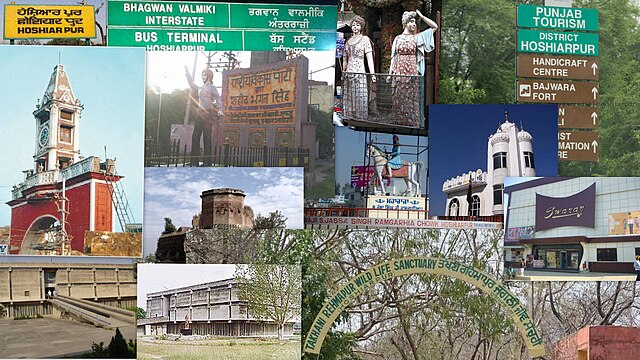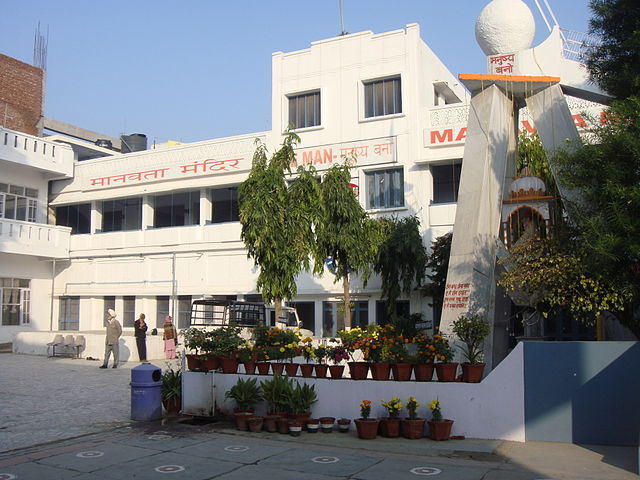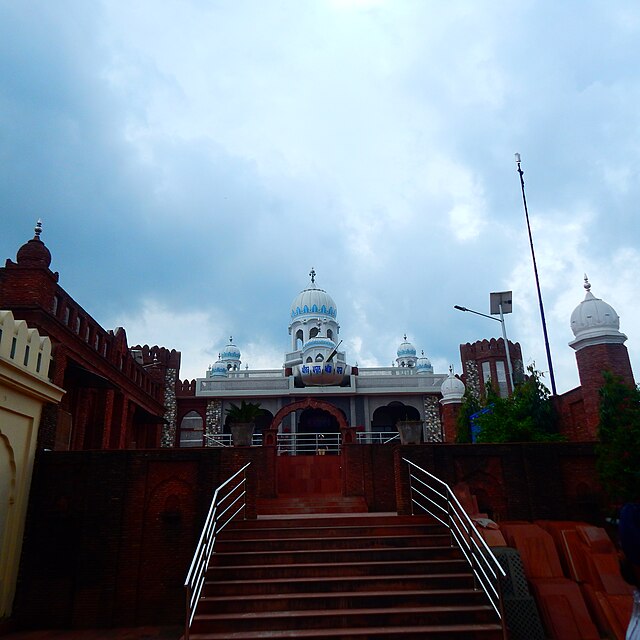Have you ever wondered what makes Hoshiarpur’s weather so unique? Located in the heart of Punjab, this vibrant city experiences a fascinating blend of subtropical climate patterns that shape daily life for its residents. Whether you’re planning a visit, considering relocation, or simply curious about weather patterns in northern India, understanding Hoshiarpur’s climate is essential.
Hoshiarpur’s weather tells a story of four distinct seasons, each bringing its own charm and challenges. From scorching summers that test your endurance to refreshing monsoons that bring life-giving rain, this city experiences the full spectrum of subcontinental weather patterns. Let’s dive deep into what makes Hoshiarpur’s weather tick and how you can stay prepared for whatever Mother Nature has in store.
Understanding Hoshiarpur’s Geographic Location and Climate Zone
Nestled at coordinates 31.52° N and 75.98° E, Hoshiarpur sits at an elevation of 317 meters above sea level. This strategic location in Punjab’s Doaba region significantly influences its weather patterns. The city experiences a subtropical climate, which means you’ll encounter hot summers, moderate winters, and a distinct monsoon season.
Think of Hoshiarpur’s location as nature’s sweet spot – close enough to the Himalayas to receive their cooling influence during winter, yet far enough to avoid extreme mountain weather. The city’s position in the Indo-Gangetic plains creates a unique microclimate that blends continental and maritime influences.
The geographical setting plays a crucial role in determining rainfall patterns too. Hoshiarpur receives rainfall above 750 mm annually, making it one of the better-watered districts in Punjab. This positioning means the city gets more precipitation than many of its western counterparts in the state.
Current Weather Conditions in Hoshiarpur
Right now, if you’re checking the weather in Hoshiarpur, you’ll find that conditions can vary dramatically depending on the season. Current temperatures show Clear conditions with readings around 93°F, though these numbers fluctuate throughout the year.
Modern weather tracking shows that Hoshiarpur’s current conditions are monitored through nearby weather stations, with the closest major station being Amritsar Airport. While this station provides reliable data, local microclimatic variations mean actual conditions in Hoshiarpur can differ slightly from reported figures.
Real-time weather monitoring has become increasingly important for residents and visitors alike. Today’s weather apps and websites provide hourly updates, helping you plan everything from morning jogs to evening social gatherings. The current weather picture typically includes temperature readings, humidity levels, wind speed, and precipitation probability.
Seasonal Weather Patterns in Hoshiarpur

Hoshiarpur’s weather follows a predictable yet fascinating seasonal cycle. The city experiences a subtropical climate with distinct seasons, including hot summers and cool winters. Each season brings its own personality, challenges, and opportunities.
Understanding these seasonal patterns helps you appreciate why locals organize their lives around weather cycles. Farmers time their crops, families plan weddings, and businesses adjust their operations based on these well-established patterns. It’s like nature’s own calendar, telling everyone when to plant, when to celebrate, and when to prepare for change.
Summer Season: Hot and Humid Months
Summer in Hoshiarpur is intense and demanding. May has an average maximum temperature of 39°C and is the warmest month of the year. This period, spanning from April through June, tests both residents and infrastructure.
During summer months, the sun becomes your primary adversary. Temperatures often soar above 40°C, creating conditions that demand respect and preparation. The heat isn’t just about temperature – humidity levels rise too, making the air feel thick and oppressive. It’s like living inside a natural oven where even the breeze feels warm.
Air conditioning becomes a necessity rather than luxury during these months. Local markets adjust their timing, opening early in the morning and late in the evening to avoid peak heat hours. Smart residents plan indoor activities during midday and venture out only when absolutely necessary.
Monsoon Season: The Rainy Period
The monsoon season brings dramatic transformation to Hoshiarpur’s landscape and lifestyle. The monsoon season typically occurs from July to September, bringing moderate to heavy rainfall. This period is both challenging and rejuvenating for the entire region.
Most rainfall is seen in July and August, when the city receives the bulk of its annual precipitation. These months can feel like nature’s reset button, washing away the summer heat and bringing greenery back to the landscape. The transformation is remarkable – dusty streets become flowing streams, and parched fields turn emerald green.
Monsoon rains in Hoshiarpur aren’t gentle spring showers. They arrive with intensity and purpose, sometimes causing temporary flooding in low-lying areas. Yet locals welcome these rains as essential for agriculture and groundwater replenishment. It’s nature’s way of preparing the region for the agricultural cycle that feeds millions.
Post-Monsoon Season: Pleasant Autumn Days
Following the monsoons, Hoshiarpur experiences some of its most pleasant weather. September and October offer a perfect balance – the oppressive heat has lifted, rains have subsided, and temperatures settle into comfortable ranges. This period feels like nature’s reward for enduring summer’s intensity and monsoon’s unpredictability.
The months of October and November are very dry, creating ideal conditions for outdoor activities and celebrations. Festival season typically coincides with this period, as comfortable weather makes gatherings and ceremonies enjoyable for everyone involved.
The post-monsoon period showcases Hoshiarpur at its most beautiful. Clear skies, moderate temperatures, and low humidity create perfect conditions for photography, tourism, and outdoor sports. Many consider this the best time to explore the city’s cultural attractions and natural beauty.
Winter Season: Cool and Comfortable Weather
Winter brings relief and comfort to Hoshiarpur residents. From December through February, temperatures drop to pleasant levels, creating conditions that many consider ideal. Unlike harsh northern winters, Hoshiarpur’s winter is gentle and welcoming.
Morning fog becomes a common sight during winter months, creating mystical landscapes that photographers love. Temperatures rarely drop below freezing, making winter clothing more about comfort than survival. Light sweaters and jackets become fashion statements rather than necessities.
Winter weather in Hoshiarpur encourages outdoor activities that summer heat makes impossible. Morning walks become popular, outdoor markets thrive, and sports activities increase significantly. It’s the season when the city truly comes alive with outdoor social activities.
Monthly Weather Breakdown for Hoshiarpur

Understanding month-by-month weather patterns helps you plan activities throughout the year. Each month in Hoshiarpur has its own character, bringing specific advantages and challenges that locals have learned to navigate over generations.
Weather patterns in Hoshiarpur follow predictable trends, yet individual years can bring surprises. Climate variability means some years are wetter, others drier, some hotter, others more moderate. This variability keeps weather interesting while maintaining overall seasonal consistency.
January to March: Cool Winter Months
These months represent Hoshiarpur’s most comfortable period. January brings cool, crisp air with minimum temperatures around 5-7°C and maximums reaching 15-18°C. February shows gradual warming, while March begins the transition toward summer heat.
January mornings often feature beautiful fog that creates ethereal landscapes. This fog can sometimes affect visibility for travelers, but it adds mystical charm to the city’s appearance. Schools and offices typically have normal schedules during these months, as weather rarely interferes with daily activities.
March marks the beginning of change. You’ll notice longer days, warmer afternoons, and the first hints of summer’s approach. Local markets begin adjusting their timings, and residents start preparing for the heat that’s coming. It’s transition time – still pleasant but with clear signs of seasonal shift.
April to June: Rising Temperatures
April begins the challenging period when temperatures climb steadily. Early April might still offer pleasant evenings, but by month’s end, air conditioning becomes necessary. May and June test everyone’s heat tolerance with relentless sun and soaring temperatures.
During these months, daily routines revolve around avoiding peak heat hours. Markets open at dawn, close during midday, and reopen in the evening. Water consumption increases dramatically, and electricity demand peaks as everyone seeks relief through cooling systems.
June represents the climax of heat intensity. Temperatures regularly exceed 40°C, and humidity makes conditions feel even hotter. This is when residents most eagerly await monsoon clouds gathering on the horizon, promising relief from the oppressive heat.
July to September: Monsoon Dominance
Monsoon arrival transforms everything in Hoshiarpur. July typically brings the first substantial rains, though exact timing varies year to year. Once monsoons establish themselves, the weather becomes dominated by clouds, rain, and dramatically cooler temperatures.
August often delivers the heaviest rainfall, sometimes causing temporary inconveniences but bringing essential water resources. Streets can become temporary rivers during heavy downpours, and residents learn to navigate waterlogged areas with practiced ease.
September marks monsoon’s gradual retreat. Rainfall decreases, but humidity remains high. This transitional period can feel challenging as the body adjusts from monsoon coolness back toward clearer, warmer conditions.
October to December: Pleasant Weather Returns
October brings some of Hoshiarpur’s most delightful weather. Post-monsoon clarity combines with comfortable temperatures to create ideal conditions for virtually any activity. November continues this pleasant trend, with clear skies and moderate temperatures.
December begins the winter season proper. Temperatures drop noticeably, especially during nighttime hours. Morning fog becomes common, and residents begin wearing warmer clothing. Yet the cold never becomes severe enough to disrupt normal activities significantly.
This period showcases why many consider autumn and early winter the best time to experience Hoshiarpur. Weather rarely interferes with plans, outdoor activities become enjoyable, and the city displays its most attractive face to visitors and residents alike.
Rainfall Patterns and Precipitation Data
Hoshiarpur’s rainfall patterns tell the story of agricultural cycles and water resource management. The city receives substantial precipitation compared to many parts of Punjab, making it relatively well-watered and agriculturally productive.
Annual rainfall totals typically exceed 750mm, with most precipitation concentrated during monsoon months. This concentration means water management becomes crucial – storing monsoon bounty for use during dry periods requires careful planning and infrastructure.
Rainfall distribution isn’t uniform across all areas of Hoshiarpur district. Highland areas typically receive more precipitation than plains, creating microclimatic variations that affect local agriculture and water availability. Understanding these patterns helps residents and farmers make informed decisions about water usage and crop selection.
Temperature Extremes: Hottest and Coldest Records
Hoshiarpur experiences significant temperature variations throughout the year. Summer maximums can exceed 45°C during extreme heat waves, while winter minimums occasionally drop to around 2-3°C during cold snaps.
These extremes, while challenging, rarely persist for extended periods. Heat waves typically last a few days to a week, while cold spells are similarly brief. The city’s subtropical location provides natural moderation that prevents truly extreme conditions from becoming the norm.
Understanding temperature extremes helps in planning everything from clothing choices to energy consumption. Residents have learned to prepare for these extremes while appreciating that they’re temporary departures from more moderate normal conditions.
How to Check Daily Weather Forecasts for Hoshiarpur
Staying informed about daily weather conditions has become easier than ever. Multiple reliable sources provide accurate forecasts for Hoshiarpur, helping residents and visitors plan their activities effectively.
Modern forecasting technology provides detailed predictions including hourly temperature changes, precipitation probability, wind conditions, and humidity levels. These detailed forecasts help you decide everything from what to wear to whether outdoor plans should proceed as scheduled.
Best Weather Apps and Websites
Several excellent platforms provide reliable weather information for Hoshiarpur. International services like AccuWeather, Weather.com, and Weather Underground offer comprehensive forecasts with detailed hourly and daily predictions.
Local and regional weather services often provide more specific information about regional conditions and weather patterns that affect Hoshiarpur specifically. These services understand local microclimates and can offer insights that global services might miss.
Mobile apps have revolutionized weather checking, providing instant updates and alerts about changing conditions. Push notifications can warn about severe weather, while hourly updates help you time outdoor activities perfectly.
Understanding Weather Symbols and Terms
Weather forecasts use standard symbols and terminology that everyone should understand. Temperature readings, precipitation percentages, and wind speed indicators each tell part of the weather story.
Learning to interpret weather maps and forecast charts enhances your ability to plan effectively. Understanding pressure systems, cloud types, and moisture indicators helps you anticipate weather changes before they occur.
Professional weather terminology might seem complex initially, but basic understanding improves your ability to use forecast information effectively. Terms like humidity percentage, dew point, and barometric pressure each provide valuable planning information.
Planning Your Activities Based on Hoshiarpur Weather

Successful activity planning in Hoshiarpur requires understanding seasonal weather patterns and daily forecast variations. Whether planning outdoor events, agricultural activities, or simple daily routines, weather awareness improves outcomes significantly.
Smart planning means having backup options for weather-sensitive activities. Outdoor events need alternate indoor venues, while travel plans should consider seasonal road conditions and visibility issues during fog season.
Best Time to Visit Hoshiarpur
Tourism and visiting patterns in Hoshiarpur clearly reflect weather preferences. October through March represents peak visiting season, when pleasant temperatures and clear skies create ideal conditions for sightseeing and outdoor activities.
Winter months, particularly November through February, offer the most comfortable conditions for extended outdoor exploration. Cultural sites, markets, and natural attractions become most enjoyable during this period when heat and humidity don’t interfere with activities.
Summer visits require careful planning and heat management strategies, while monsoon season can offer unique experiences for those prepared for rain and humidity. Each season has its attractions, but comfort levels vary dramatically depending on weather tolerance.
Weather-Appropriate Clothing Guide
Dressing appropriately for Hoshiarpur’s weather requires understanding seasonal requirements and daily variations. Summer demands light, breathable fabrics and sun protection, while winter calls for layered clothing that can adapt to temperature changes throughout the day.
Monsoon season requires waterproof clothing and footwear that can handle wet conditions. Quick-dry fabrics become valuable during humid periods, while water-resistant accessories protect electronics and important documents.
Seasonal clothing storage and rotation become important household management tasks. Residents typically maintain separate wardrobes for different seasons, storing heavy winter clothes during summer and light summer clothing during monsoon season.
Climate Change Impact on Hoshiarpur Weather
Climate change is gradually affecting weather patterns in Hoshiarpur, creating new challenges and requiring adaptive strategies. Rising temperatures, changing precipitation patterns, and increased weather variability are becoming noticeable trends.
Extreme weather events may become more frequent, requiring improved preparedness and infrastructure adaptation. Heat waves might become more intense, while monsoon patterns could become less predictable, affecting agricultural cycles and water management.
Understanding these long-term trends helps residents and planners prepare for future challenges while adapting current practices to changing conditions. Climate awareness becomes increasingly important for sustainable living and effective resource management.
Weather in Hoshiarpur reflects the dynamic interplay between geography, seasons, and climate systems that create the unique character of this Punjab city. From scorching summers to refreshing monsoons, from pleasant winters to transitional seasons, Hoshiarpur’s weather patterns shape daily life, agricultural cycles, and cultural traditions.
Understanding these patterns empowers you to make better decisions about everything from daily clothing choices to major life planning. Whether you’re a resident learning to navigate seasonal changes or a visitor planning the perfect trip, weather awareness enhances your Hoshiarpur experience significantly.
The city’s weather story continues evolving with climate change and urban development, making ongoing weather literacy increasingly valuable. Stay informed, stay prepared, and embrace the seasonal rhythms that make Hoshiarpur’s climate both challenging and rewarding.
Conclusion
Hoshiarpur’s weather presents a fascinating study in subtropical climate patterns that significantly impact daily life, agriculture, and cultural activities in this vibrant Punjab city. From the intense summer heat that can reach 45°C to the comfortable winter months with temperatures around 15-18°C, understanding these seasonal variations is crucial for residents and visitors alike.
The city’s strategic location at 317 meters above sea level creates unique weather patterns that include substantial monsoon rainfall exceeding 750mm annually, concentrated primarily in July and August. This precipitation pattern supports agriculture while creating distinct wet and dry seasons that locals have adapted to over generations.
Whether you’re planning a visit during the pleasant October-March period or preparing for the challenging summer months, being weather-aware enhances your Hoshiarpur experience. The city’s climate story reflects broader subcontinental weather patterns while maintaining its own distinct character shaped by geography, elevation, and regional influences.
As climate change continues affecting global weather patterns, staying informed about Hoshiarpur’s evolving climate becomes increasingly important for sustainable living and effective planning. Embrace the seasonal rhythms, prepare for weather extremes, and appreciate the natural cycles that make this Punjab city’s climate both challenging and rewarding.
Frequently Asked Questions
Q1: What is the best time to visit Hoshiarpur weather-wise?
The ideal time to visit Hoshiarpur is from October to March when temperatures are comfortable, ranging from 15-25°C during the day. This period offers clear skies, minimal rainfall, and pleasant conditions perfect for sightseeing and outdoor activities. Winter months (December-February) are particularly comfortable with cool mornings and mild afternoons.
Q2: How hot does it get in Hoshiarpur during summer?
Summer temperatures in Hoshiarpur can be quite intense, with May being the hottest month reaching average maximums of 39°C. During extreme heat waves, temperatures can exceed 45°C, making air conditioning essential and outdoor activities challenging during midday hours from April through June.
Q3: When does the monsoon season start and end in Hoshiarpur?
The monsoon season in Hoshiarpur typically begins in July and continues through September. The heaviest rainfall occurs in July and August, with the city receiving most of its annual precipitation during these months. The monsoon brings essential relief from summer heat while supporting agricultural activities.
Q4: Does Hoshiarpur experience extreme winter cold?
No, Hoshiarpur experiences mild winters compared to northern mountain regions. Winter temperatures rarely drop below 2-3°C, with average minimum temperatures around 5-7°C in January. While morning fog is common and light woolens are needed, the cold never becomes severe enough to significantly disrupt daily activities.
Q5: How much rainfall does Hoshiarpur receive annually?
Hoshiarpur receives above 750mm of rainfall annually, making it one of the better-watered districts in Punjab. Most precipitation occurs during the monsoon months of July-September, with October and November being particularly dry. This rainfall pattern supports the region’s agricultural activities and groundwater replenishment.

